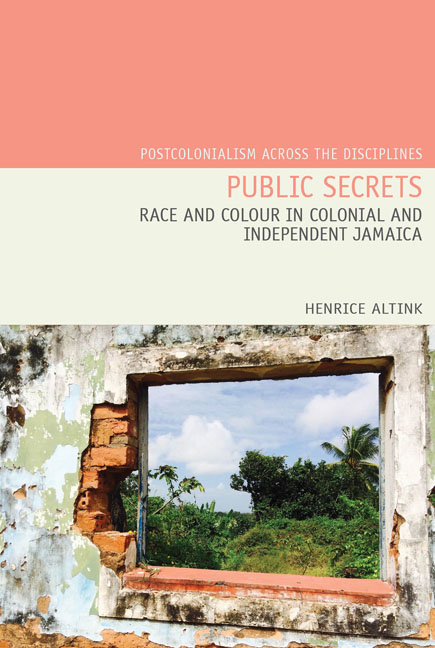Book contents
3 - Race in Everyday Life
Summary
The previous chapters have shown that over time race and colour came to play a less prominent role on the labour market and in schools. But even with advances in education, within the private sphere of the home and in such semi-private and semi-public spaces as clubs, churches, and hotels, race and colour relinquished little of their power. This chapter demonstrates and explains the power of race and colour in everyday interactions and is divided into two parts. The first section explores the overt and covert, verbal and non-verbal practices that conveyed to Jamaican children the complex meanings of race. Drawing largely upon anthropological studies and memoirs, it illustrates that class and colour were closely entwined but that colour in and of itself exerted power over individuals by bestowing or withholding privilege. The practices discussed instilled a strong white bias, leading to self-contempt in those furthest removed from whiteness. But as soon as children had understood the complex meanings of race and colour, they were taught not to talk about race. To illustrate the discursive strategies they used as adults to talk about this forbidden subject, the first section also examines several racial incidents that attracted wide media attention.
Yet colour-blindness in Jamaican society coexisted with colour-consciousness. Children learned to distinguish between a vast range of skin tones and soon began to treat people differently on account of their shade. The second section deals with physical segregation by race and colour, focussing not just on residential segregation but also the extent to which ‘shades’ mingled in private homes and in a range of semi-public and semi-private spaces. This section is not only concerned to demonstrate the existence of exclusionary race and colour practices even long after independence, it also provides further evidence that colour-blindness was the dominant racial ideology in colonial and independent Jamaica by exploring responses to accusations of racial discrimination in a variety of settings, focussing particularly on racial incidents that took place in hotels. From an early age, children learn about race in a variety of ways. Studies on racial socialisation – the implicit and explicit, deliberate, and inadvertent, and verbal and non-verbal messages about race – have shown that parents are the primary source of race socialisation messages.
- Type
- Chapter
- Information
- Public SecretsRace and Colour in Colonial and Independent Jamaica, pp. 115 - 159Publisher: Liverpool University PressPrint publication year: 2019

